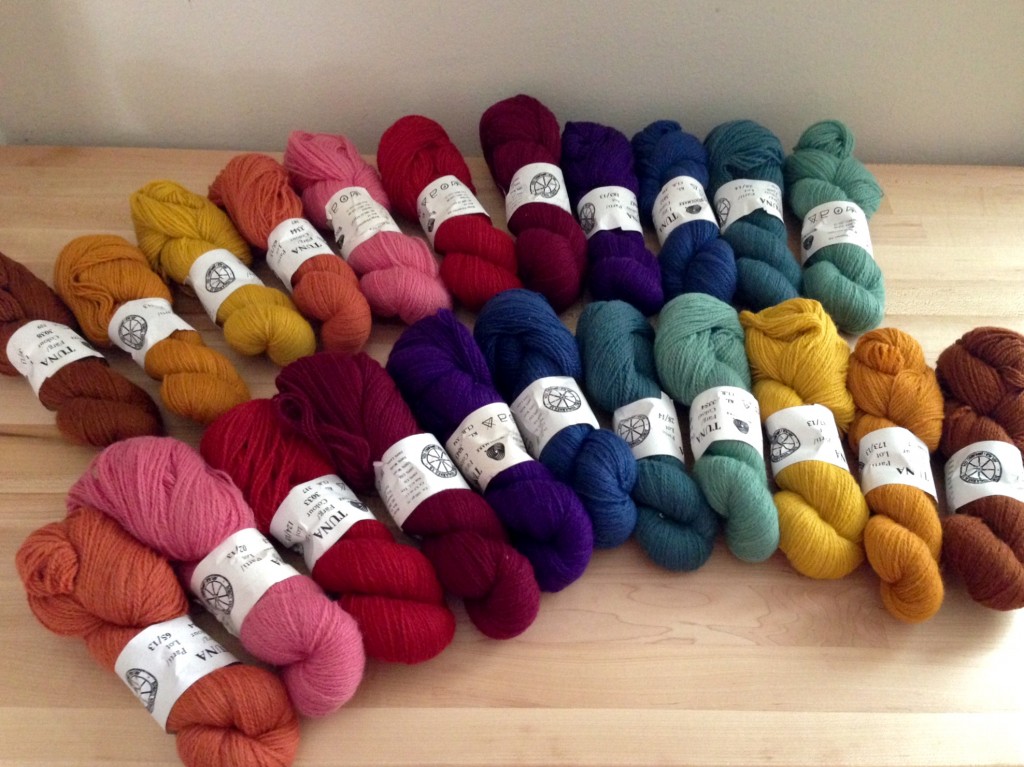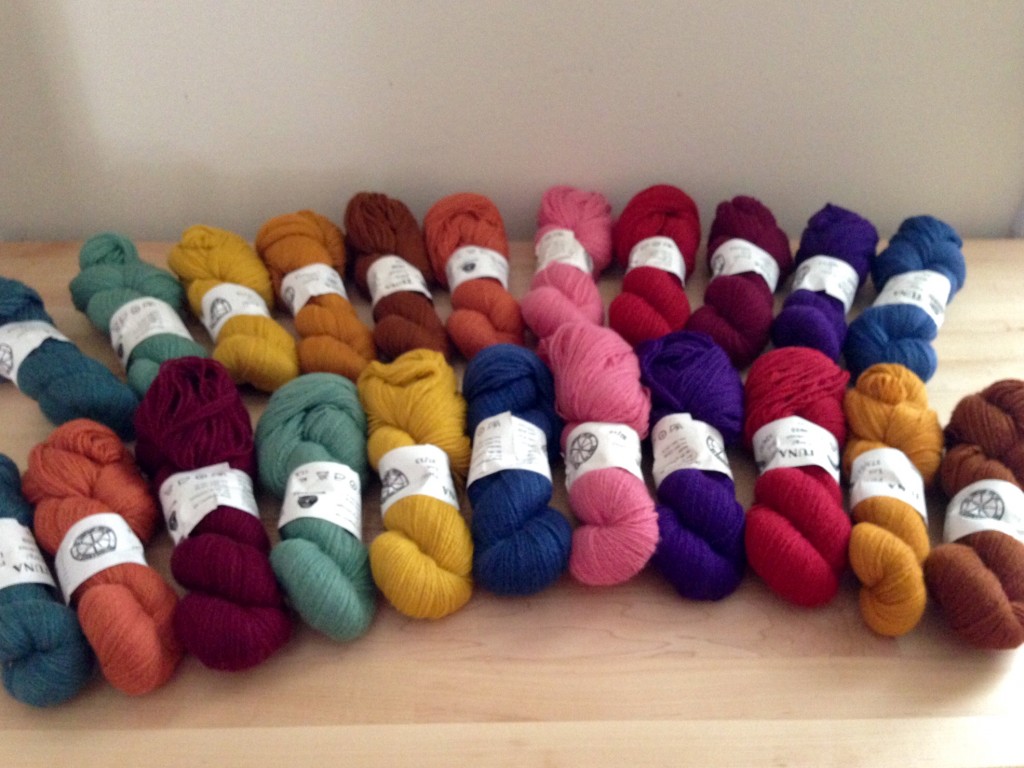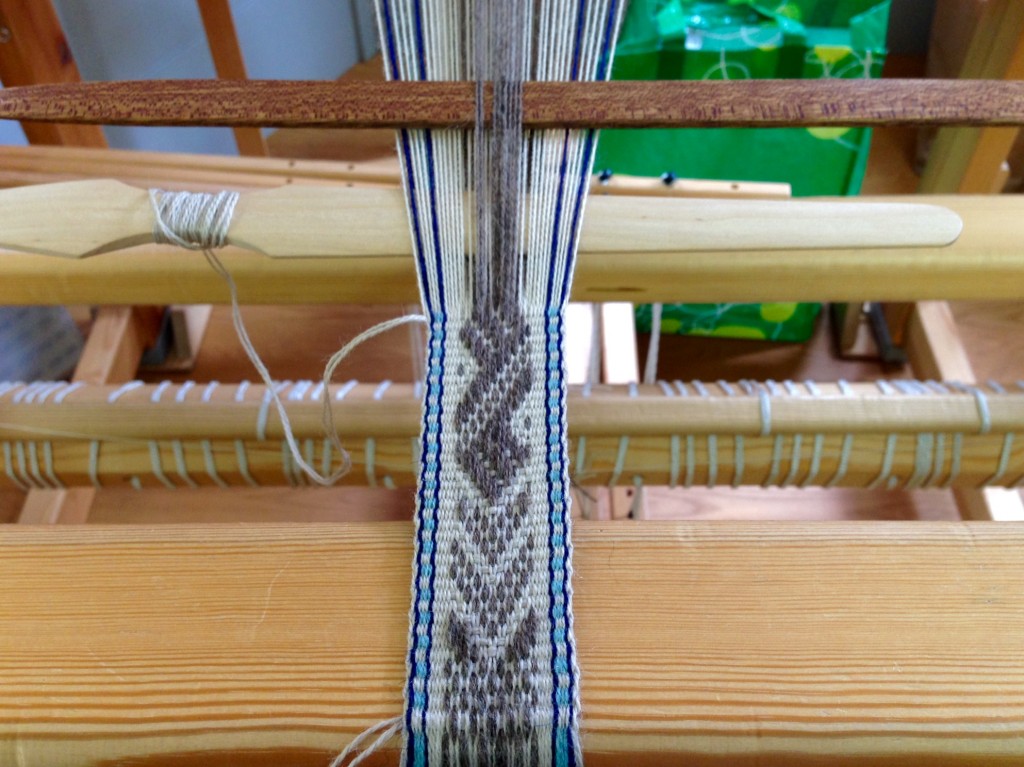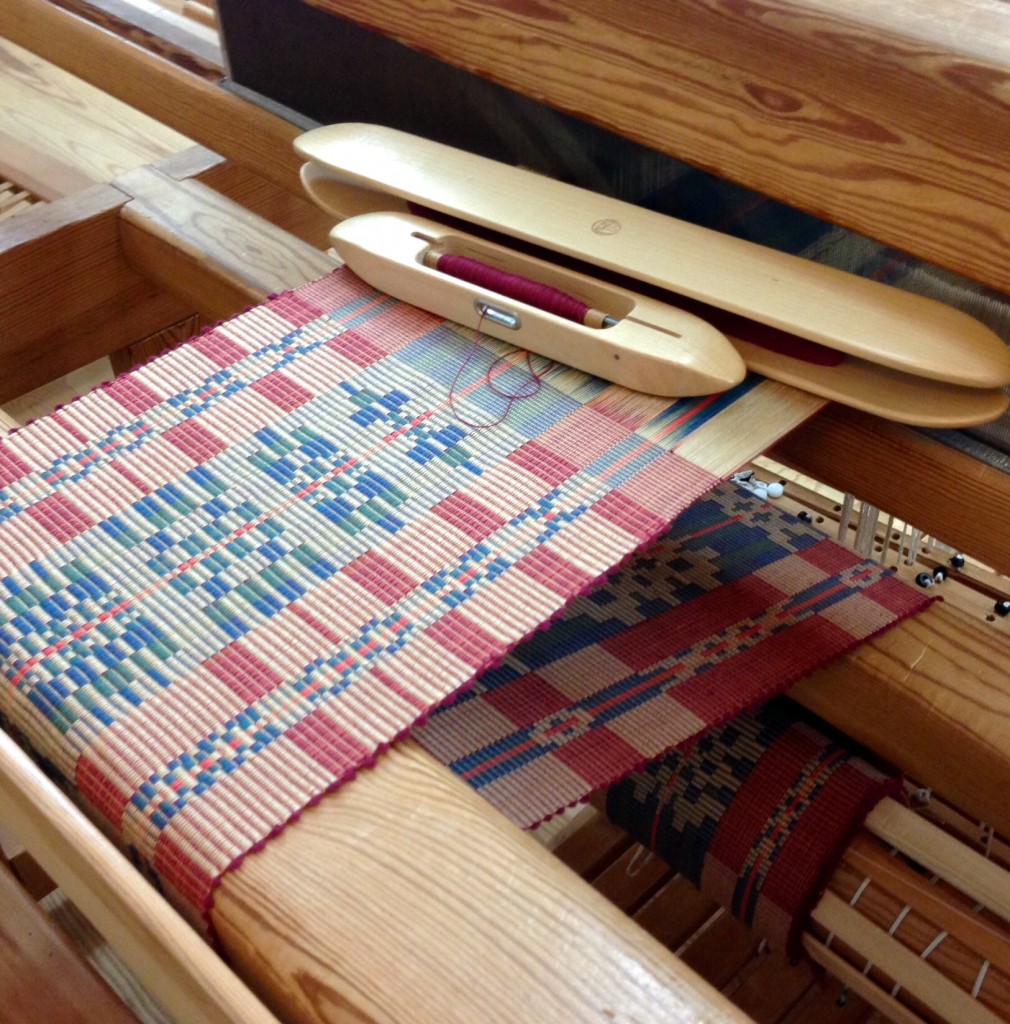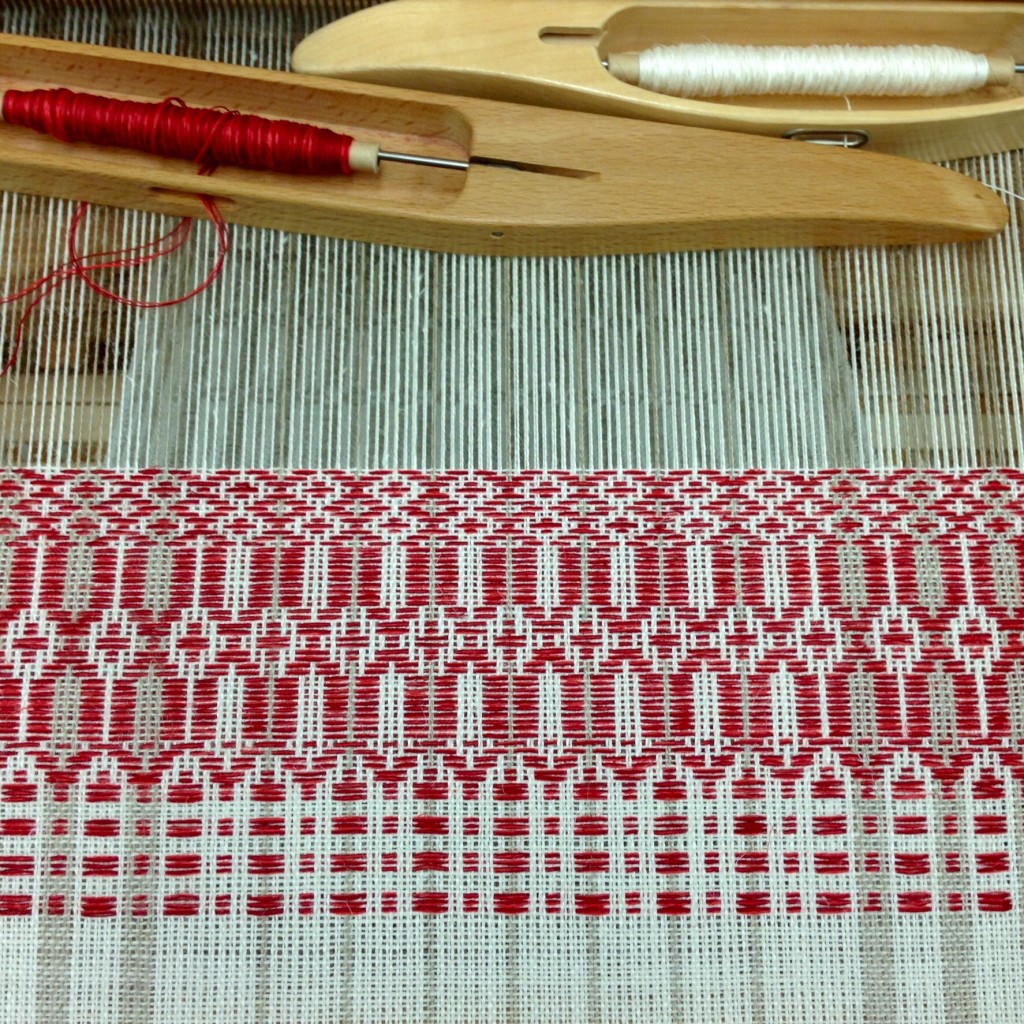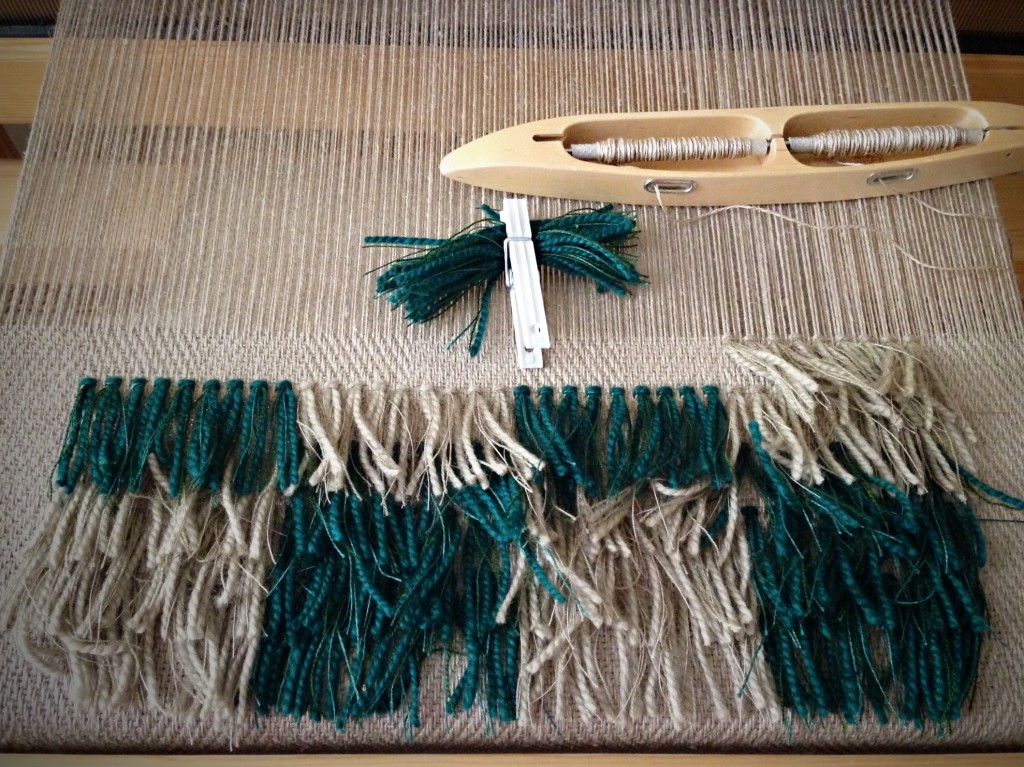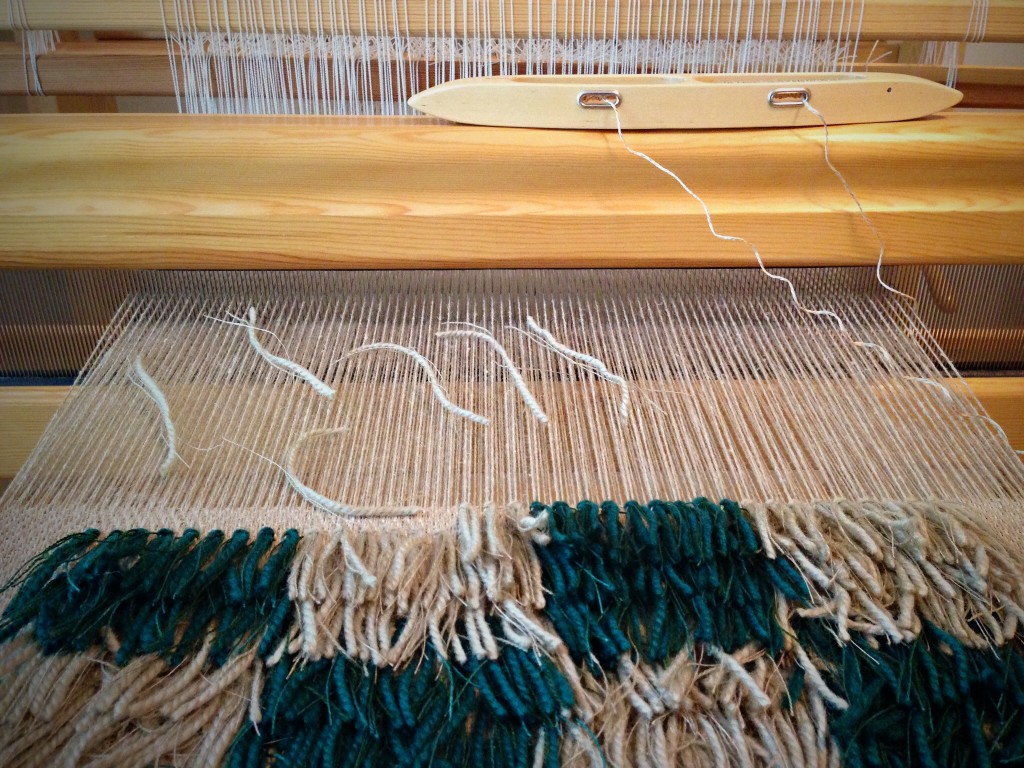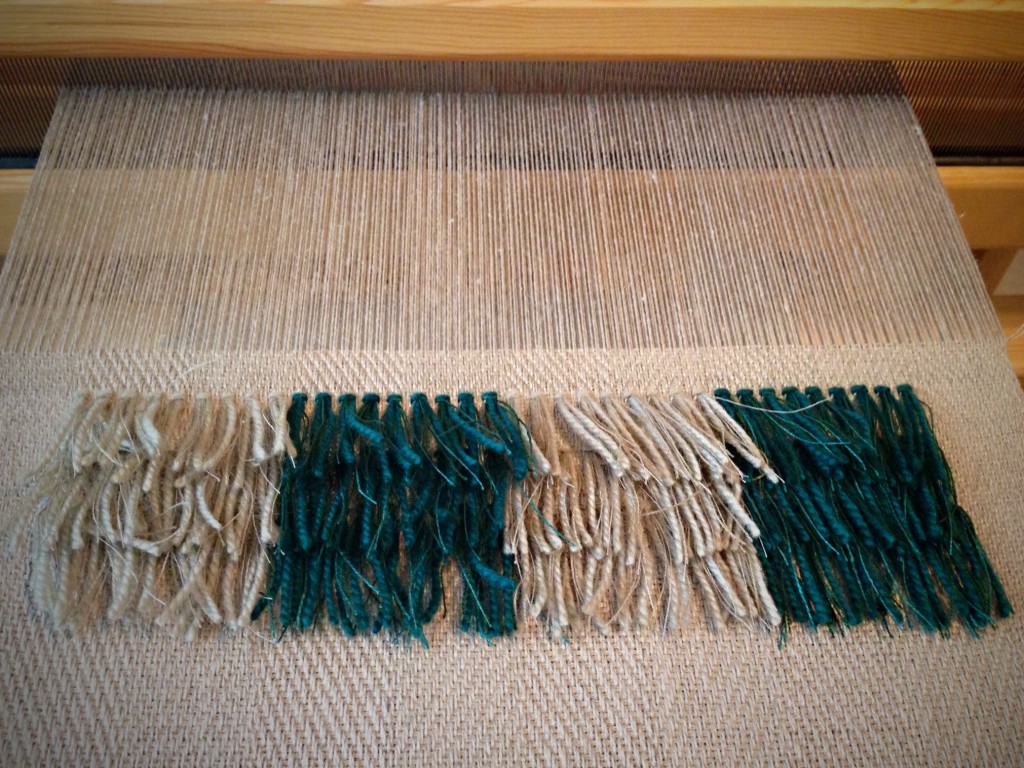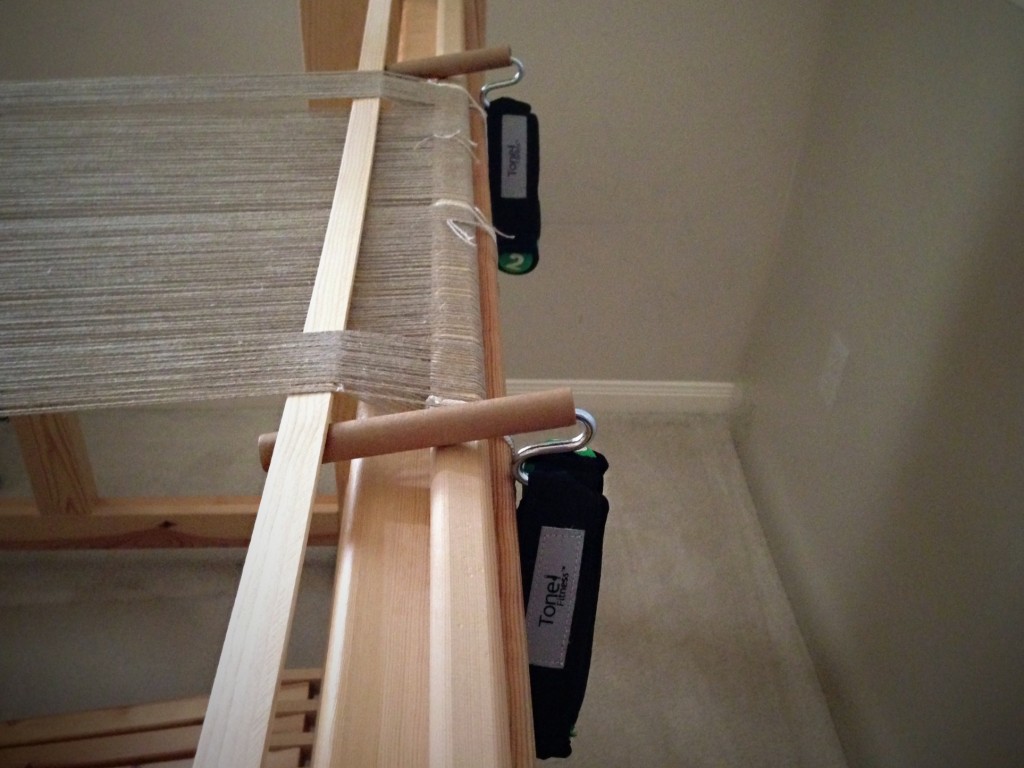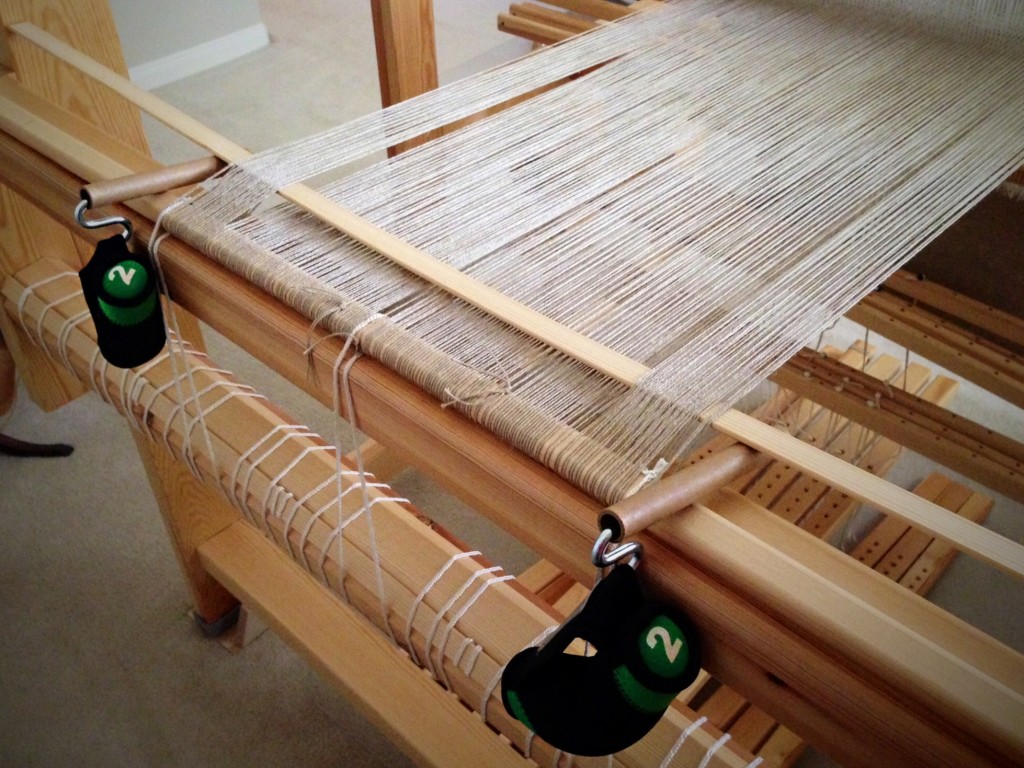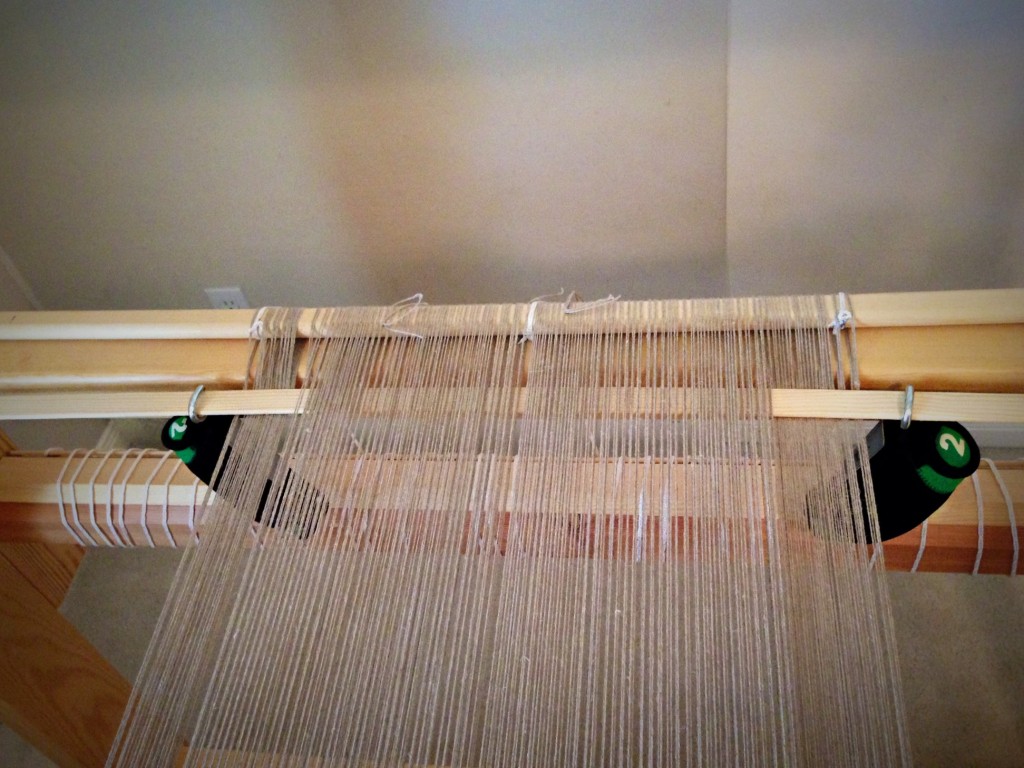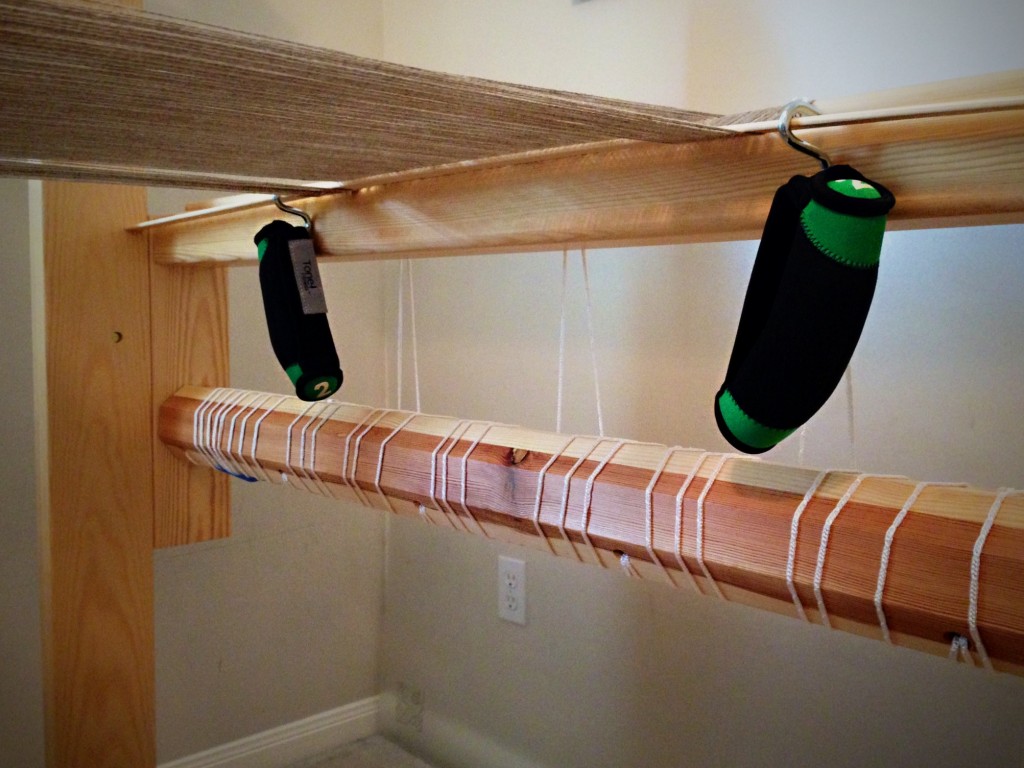Do you know that New Mexico has a guide to rural fiber arts destinations across the state? Last week, Steve and I dusted off the New Mexico Fiber Arts Trails, driving 1,100 miles through mountainous deserts and lush Rio Grande River valleys. We reveled in views of God’s creation, like cottonwood trees in brilliant yellow, and the Sandia mountains turning purple and watermelon pink in the setting sun. We visited interesting studios and shops all along the way, and encountered weavers who are true artisans.
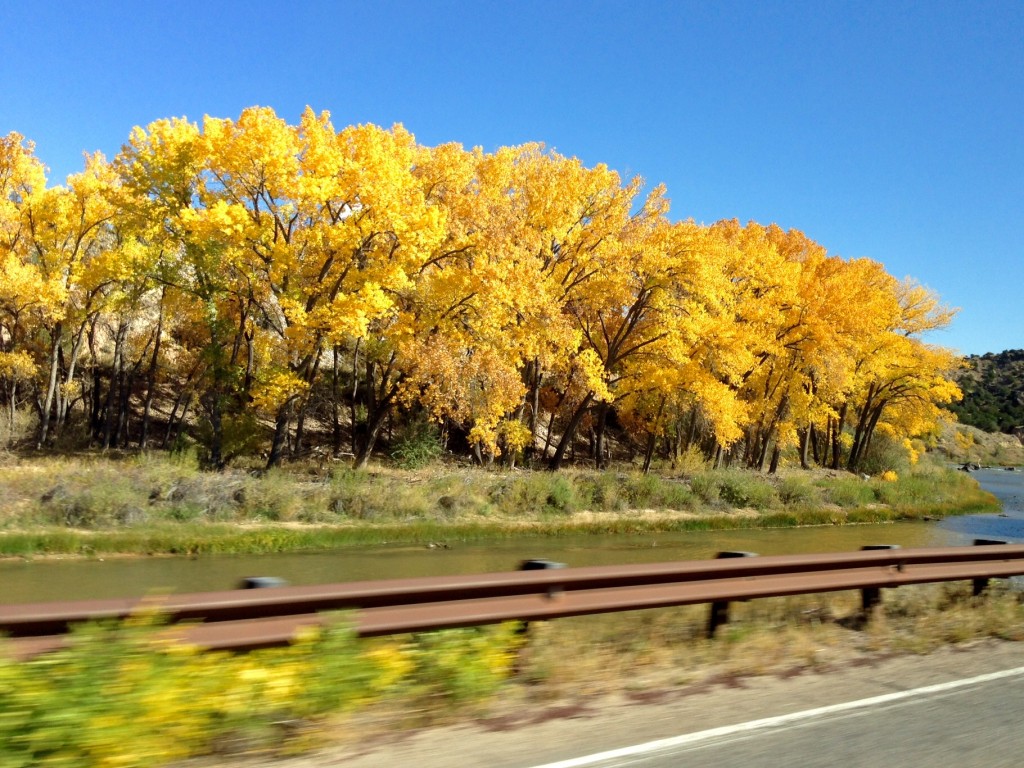
Four Pointers for Your New Mexico Fiber Arts Trails Adventure:
1. Call ahead. Some of the stops are one-person studios, attached to a residence. Some places have changed their hours or days of the week that they are open. We drove two hours one day to visit a special shop, only to find a note on the door that said they were closed that day of the week.
2. Ask good questions. I like to ask a weaver a question that only another weaver would ask. Instead of introducing myself as a fellow handweaver, I like to let them figure it out by the questions I ask.
3. Wear something handwoven. My handwoven cap opened the door to conversation with other weavers.
4. Resist adding to your stash. I knew that I would have the opportunity to purchase beautiful yarn, but I decided in advance not to add to my stash. I gathered information instead; and now I have more resources to choose from when it is time to order yarn.
My Favorite Stops:
Albuquerque
Sacramento Mountain Weavers (not listed on the Fiber Arts Trails), Kelly Stewart
Located in historic Old Town, this shop has a Glimåkra Standard loom (like mine). Among other things, Kelly has woven rag rugs from strips of soft leather.
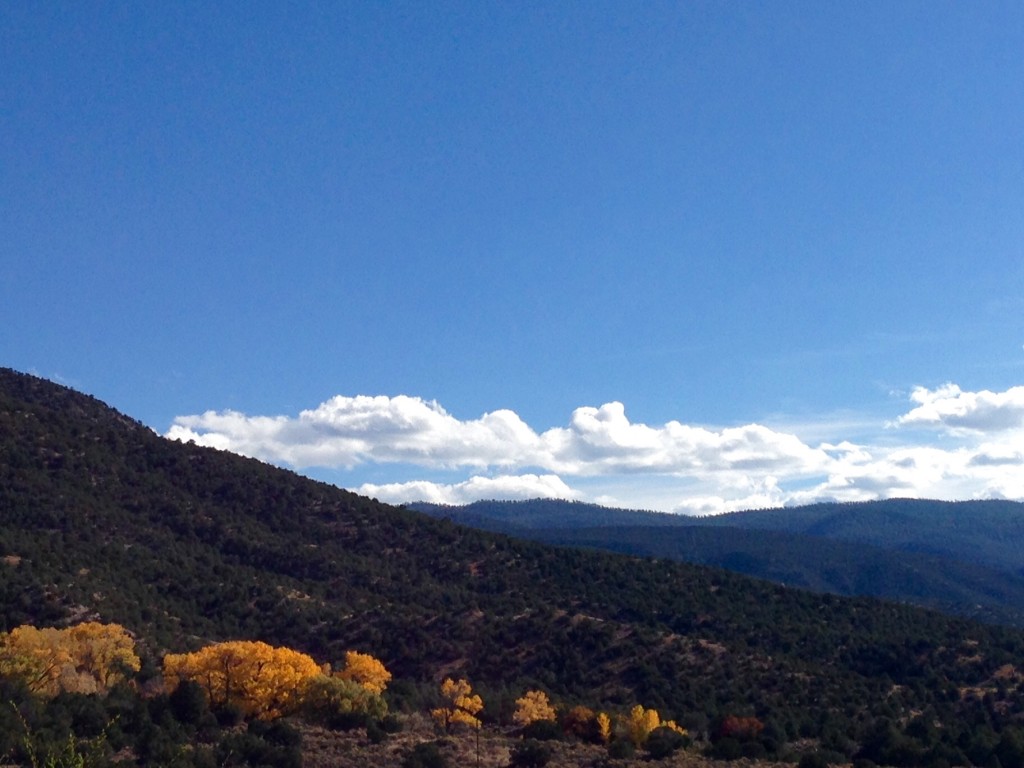
Edgewood
Robin Pascal Fiber Artist
Robin’s studio is nestled in a scenic hillside covered with trees and wildlife. Her handspun yarn proved irresistible to me. This is where I broke my own rule of not adding to my stash.
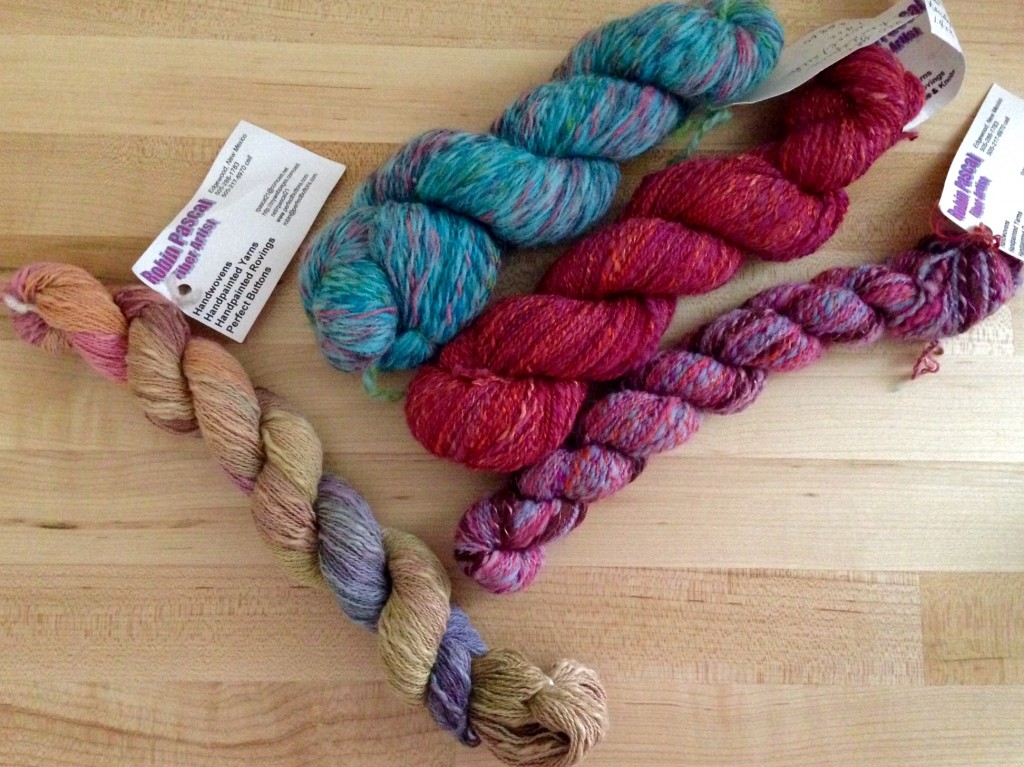
Arroyo Seco (just north of Taos)
Weaving Southwest, Teresa Loveless
Amazing tapestry weavings on display! Teresa is the granddaughter of acclaimed tapestry weaver and author, Rachel Brown. Teresa carries her grandmother’s legacy by teaching tapestry techniques to interested students. There are Rio Grande walking looms in the teaching studio, where you do all the weaving standing up, not sitting. Who knows? You may see me taking a class from Teresa. Her passion for tapestry weaving is contagious.
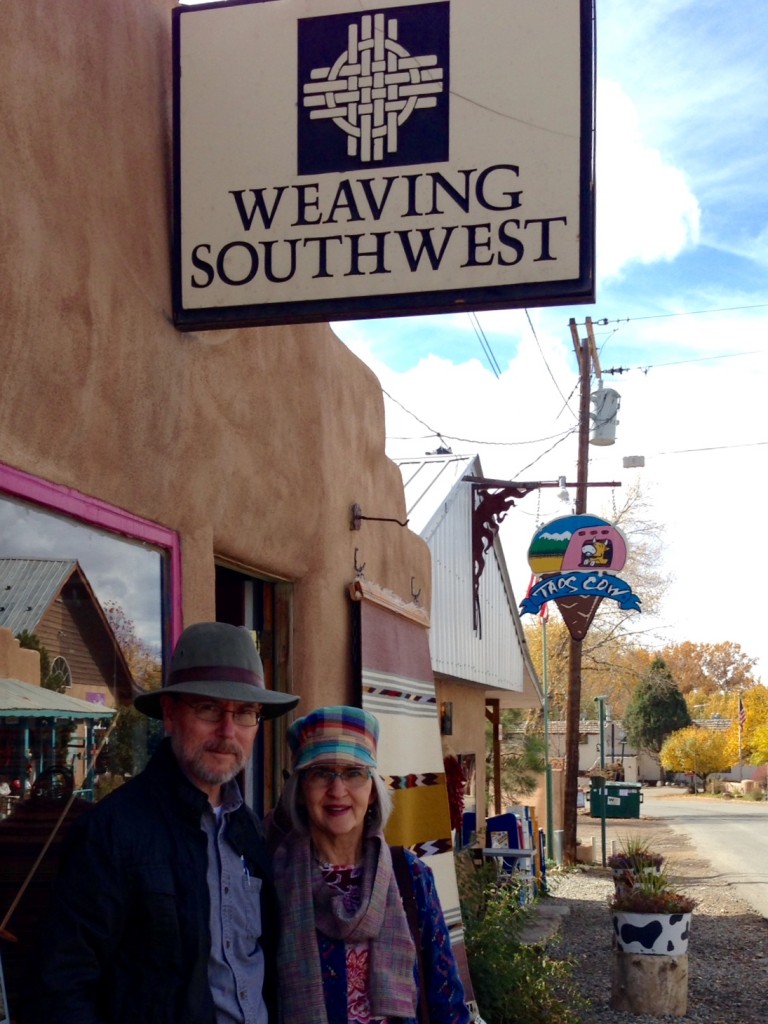
Ranchos de Taos
Old Martina’s Hall Restaurant, Tapestry Exhibit (not listed on the Fiber Arts Trails)
Art Through The Loom Weaving Guild Show, August 20th through February 28th, 2015
This outstanding tapestry exhibit is not to be missed if you are anywhere near the vicinity! Downstairs and upstairs, every room in this restored, old dance hall is adorned with exquisite pieces of traditional and contemporary woven tapestries by nineteen different artists.
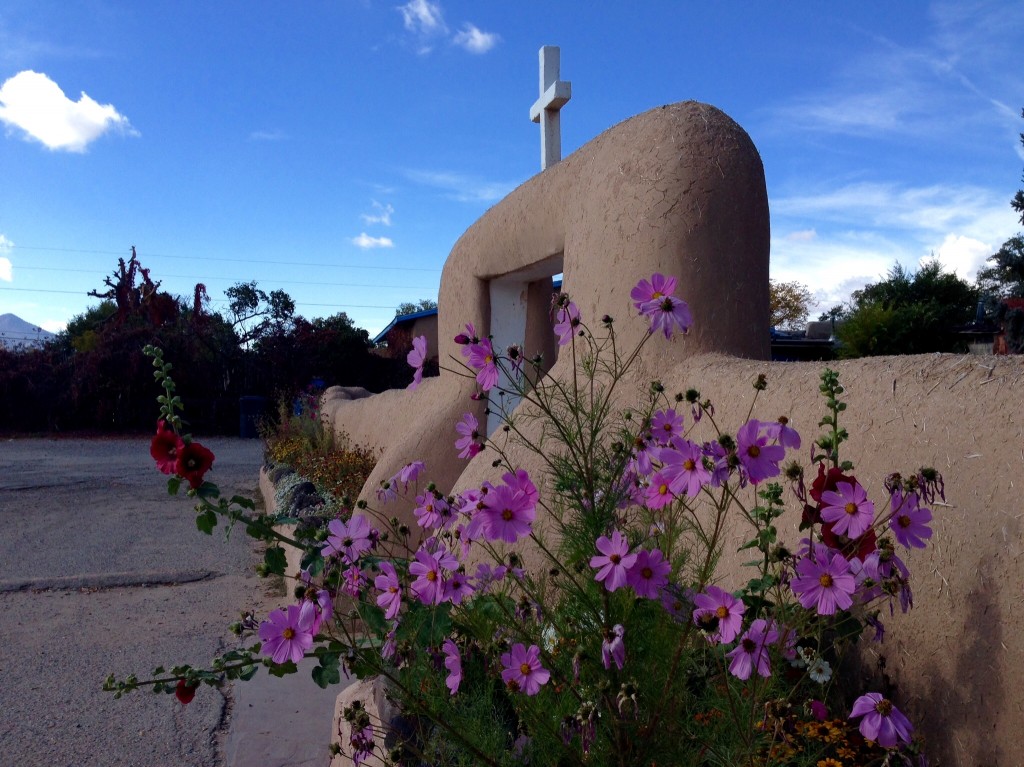
Chimayó
Trujillo’s Weaving Shop (not listed on the Fiber Arts Trails), Carlos Trujillo
The first thing we saw when we entered the shop was a huge, rustic Rio Grande walking loom. Carlos was at the loom, weaving. He clearly loves designing at the loom, using unique color combinations in traditional designs. His grandfather built this impressive loom. Two women in an adjacent room filled with looms allowed me to watch over their shoulders as they wove traditional Chimayó patterns. One of the women showed me the small, narrow loom they now use for weaving coasters, and told me, “This was the loom Carlos learned to weave on when he was a little boy. As he grew, blocks were added to raise the loom to fit him.”
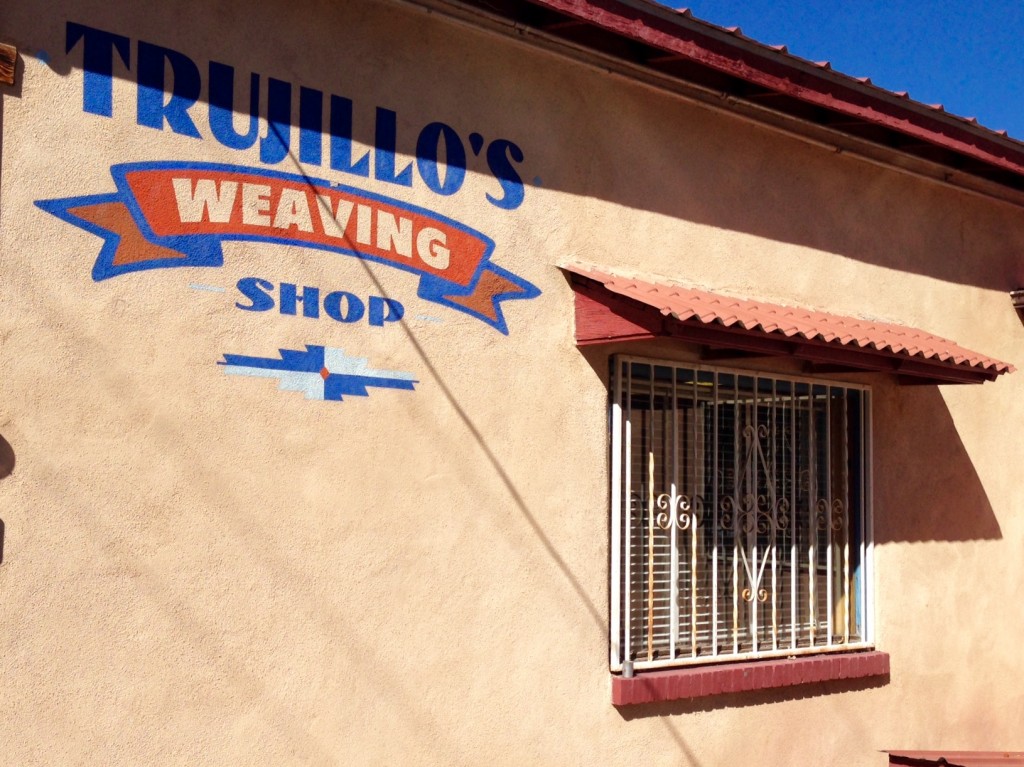
Chimayó
Centinela Traditional Arts, Irvin Trujillo
Irvin allowed me to watch and ask questions as he wove in the massive weaving room in the far end of the shop. It was inspiring to watch this master weaver at work. I found Irvin to be unpretentious, even though his expertise is astounding. You should see his intricate tapestries that hang in the showroom of the shop! Weaving is second nature to Irvin, who has been creating with wool on a loom since he was a young boy.
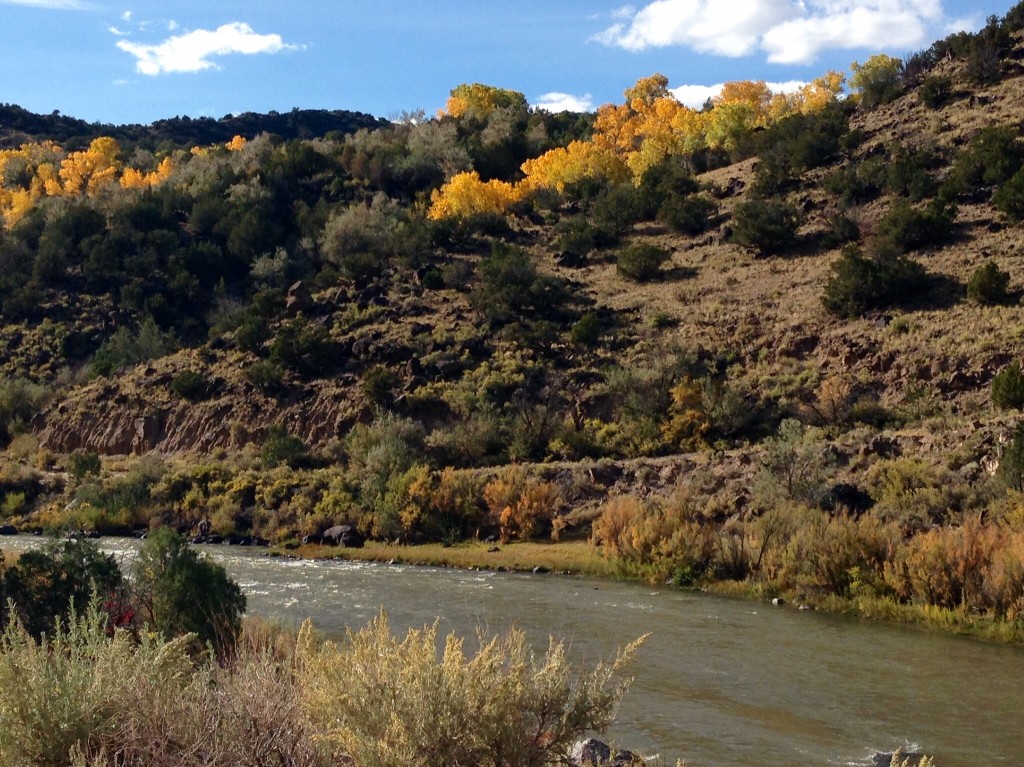
Magdalena
Cat Brysch Creations Studio
Cat’s nine looms are clothed in colors that describe the terrain and sky of this beautiful mountainous desert. She took the time to explain each loom’s fabric to me, as I marveled at her skill of blending colors in the warp.
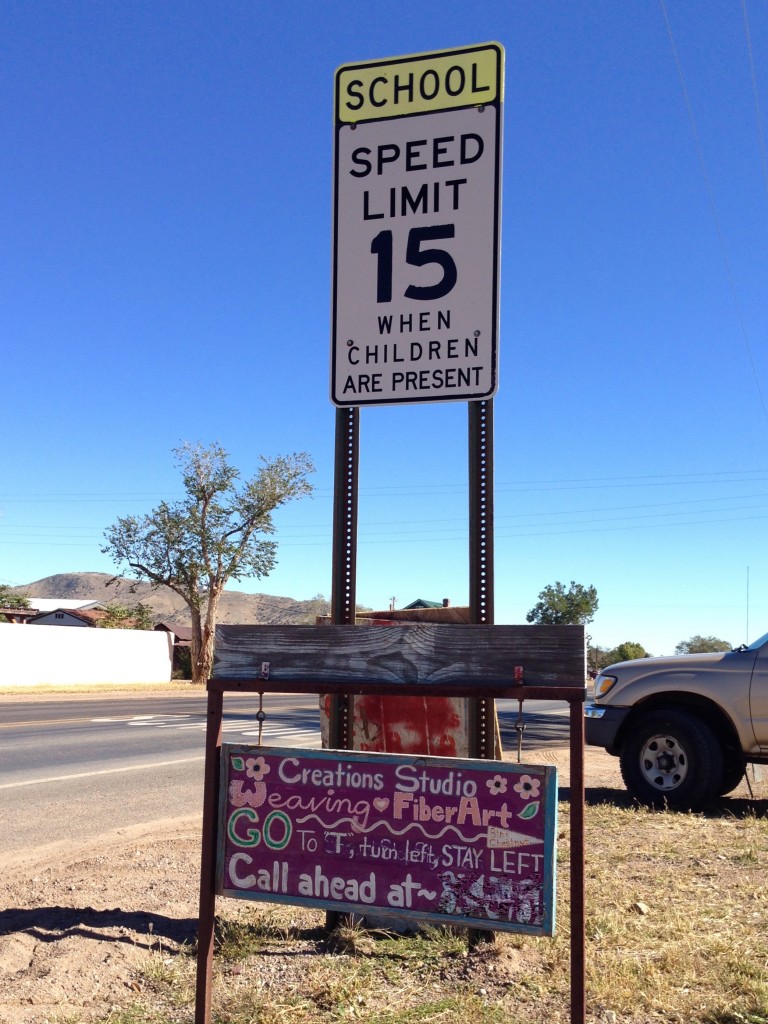
Pie Town
If you go as far as Magdalena, you might as well go another 56 miles to Pie-o-neer in Pie Town, New Mexico. The green chile stew is fantastic, but if I had known how good the hot-from-the-oven double cherry (tart and sweet) pie would be, I would have skipped the stew and ordered two slices of pie! Steve said the same about his slice of warmed peach pie. It was a great way to end our Fiber Arts Trails adventure.
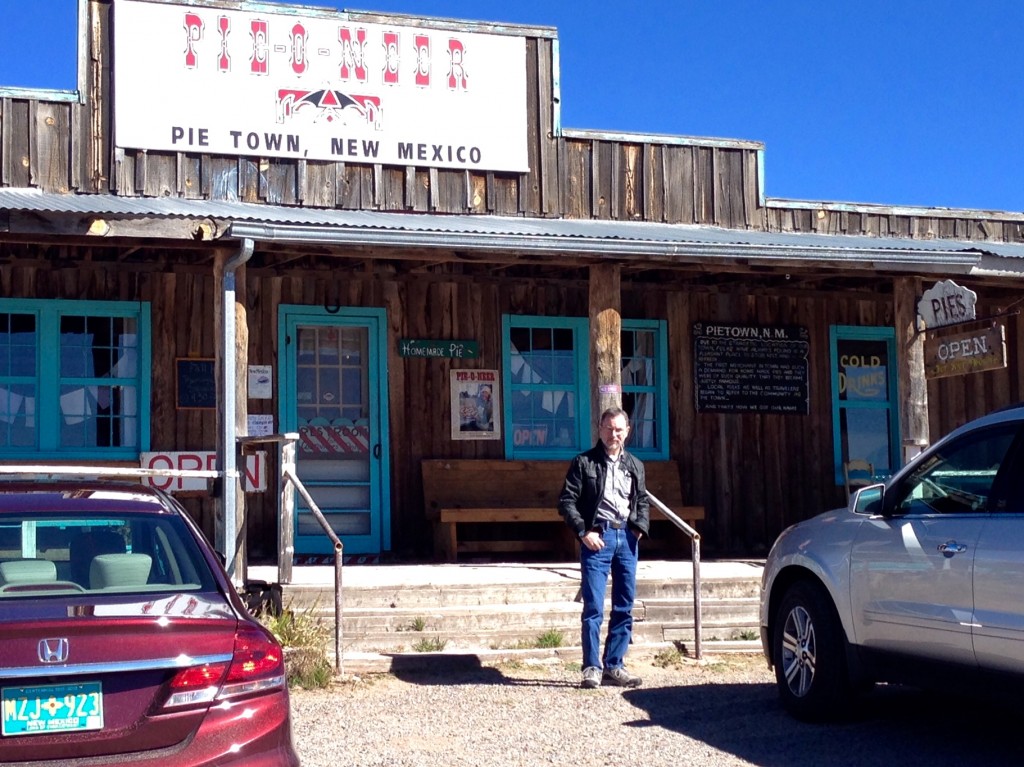
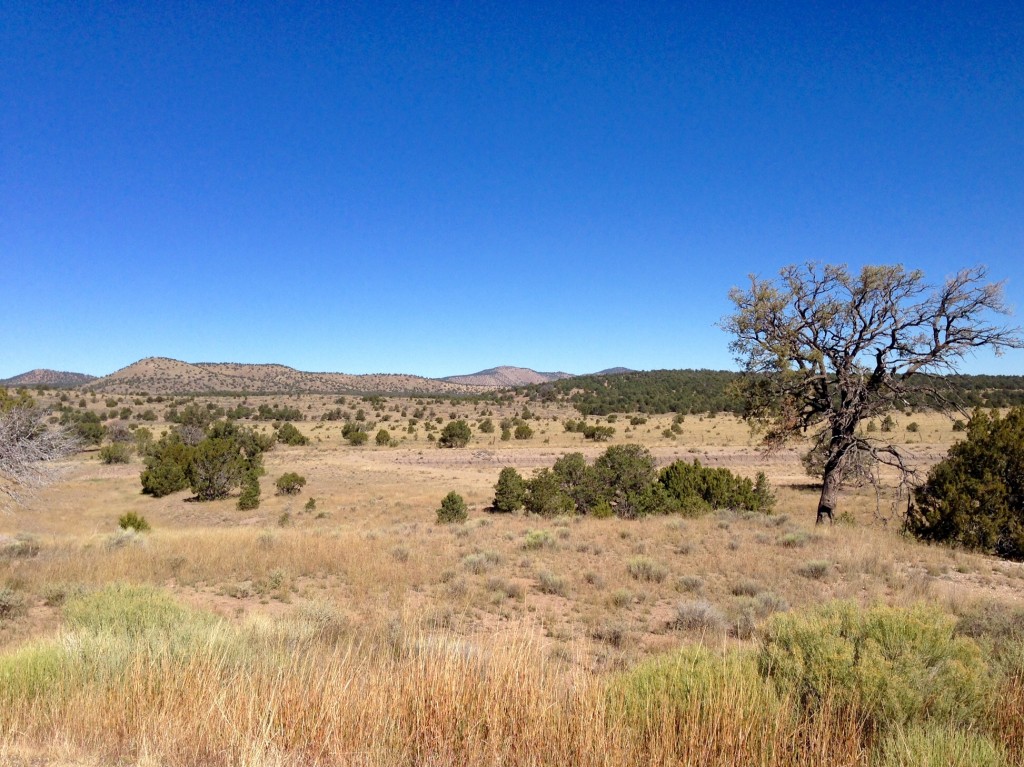
May you go on explorations and adventures.
Your traveling weaver,
Karen

